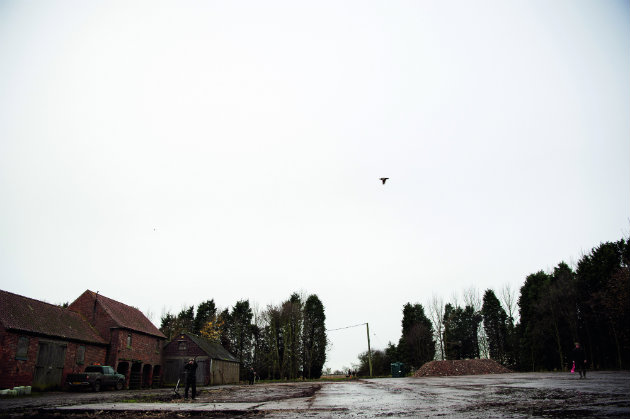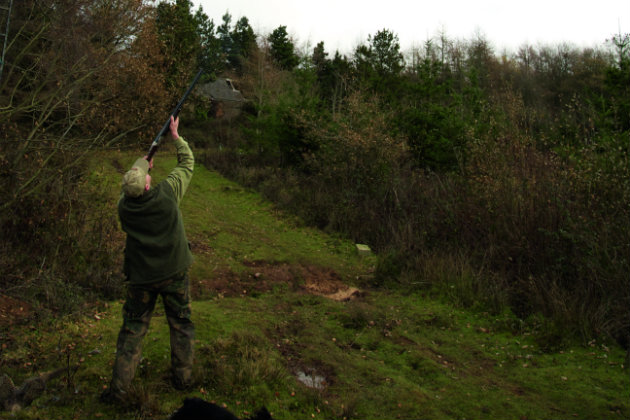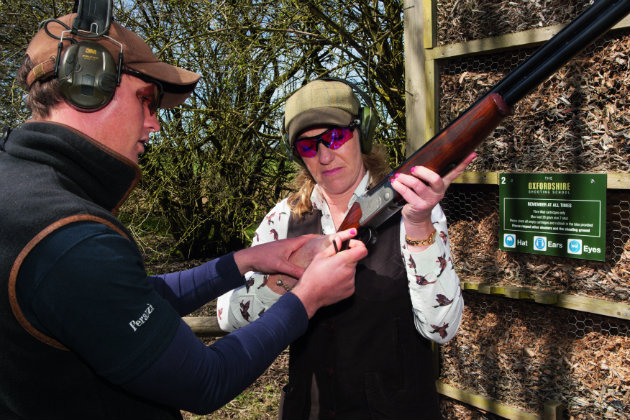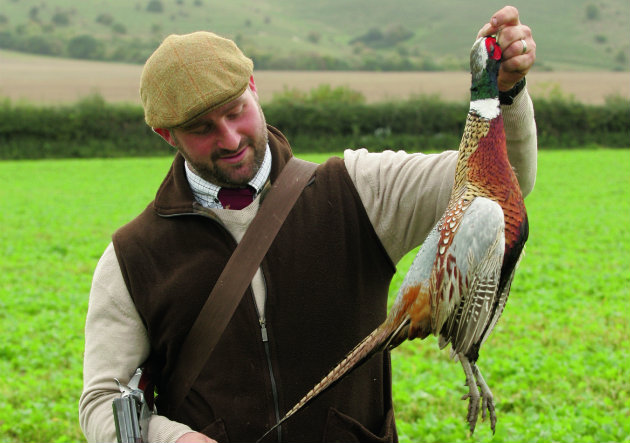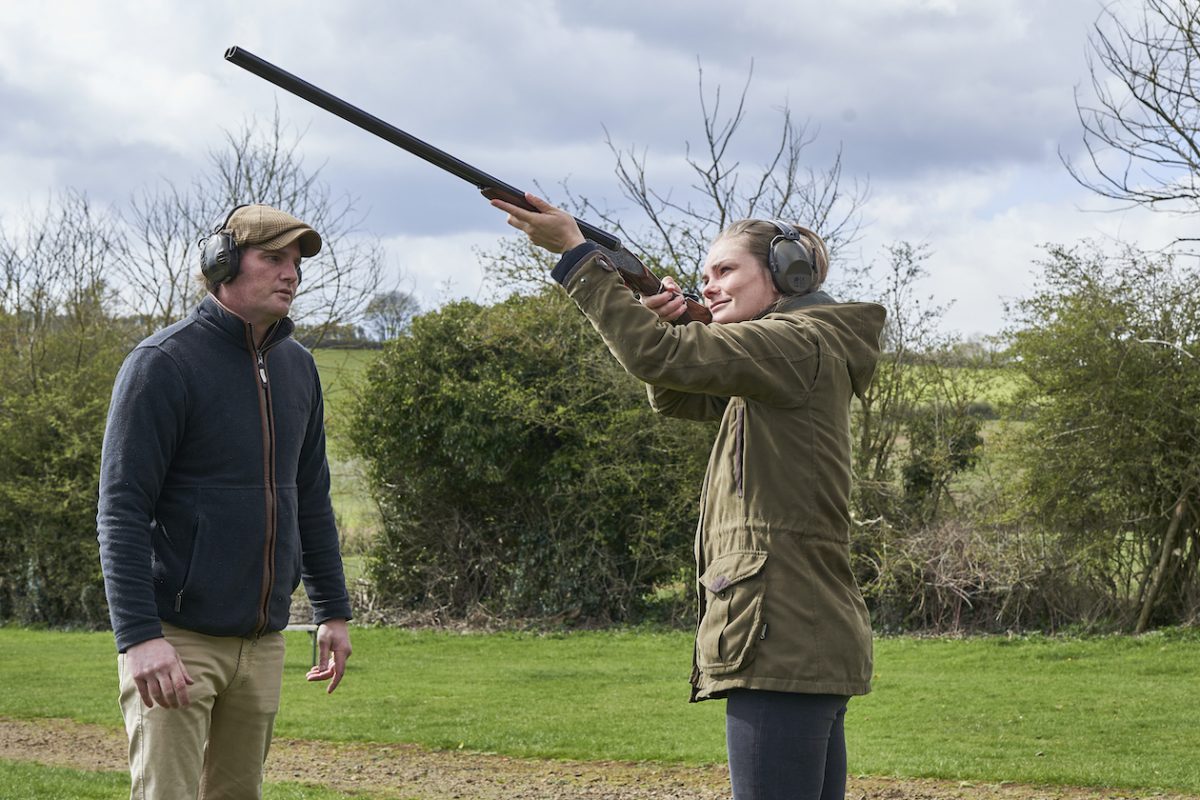When it comes to teaching an adult to shoot, I always treat each person as an individual. I do not…
Win CENS ProFlex DX5 earplugs worth £1,149 – enter here
How to shoot more driven birds
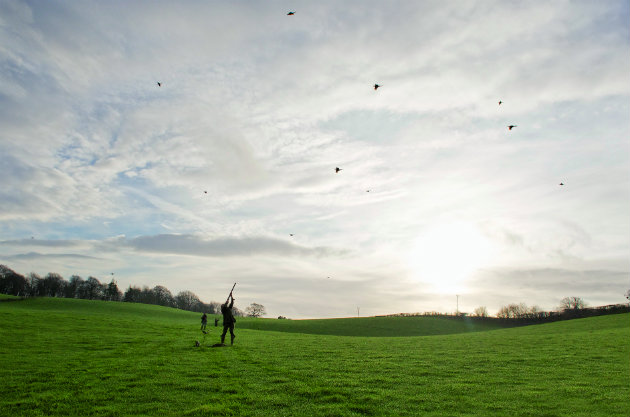
At this time during the season, I tend to lose count of the number of times I hear Guns saying, “I got off to a really good start with my shooting, but now the wheels have fallen off …”.
There are a few factors that cause this. Birds are now strong on the wing, the weather conditions have got tougher and, in many cases, a certain complacency may have crept in just at the point where total concentration is required for any Gun to shoot to the best of their ability.
Essentially, the bar has been raised and the shooting is tougher. And with this in mind, here are some points you should focus on to keep you in the game for the rest of the season.
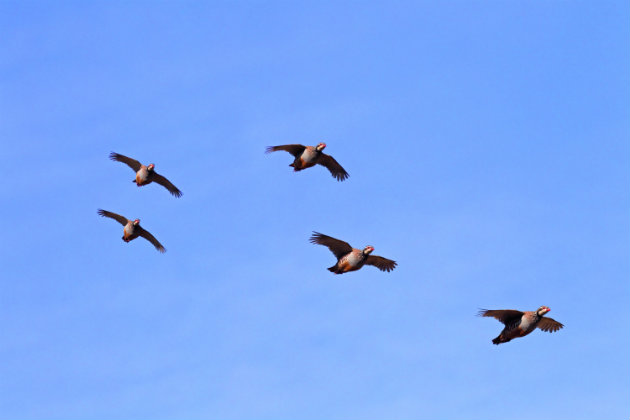
Partridges in flight can be deceptive
Partridges in flight
With any gameshooting, the more you understand a bird’s behaviour, the better you will shoot. Partridges in flight are deceptive to a lot of Guns as they can give the impression of moving at considerable speed.
Reading the drive correctly will be key in helping you work out how the approaching birds will take on the line. Wind conditions will play a big role as the wind will affect the speed and direction of birds and coveys in flight. However, don’t think that because you are on the wrong side of the wind you will be out of the shooting. It always amazes me how partridges will cut back into a strong wind.
- Concentration during the drive is very important. If you don’t stay alert then you will get caught out and it is as simple as that. Don’t worry about who is shooting what, focus on your peg and your zone. If you are caught unawares when a covey comes over the line, what generally happens next is bad bird selection — if any selection at all — followed by panic, poor timing, a rushed shot and an inevitable miss. At that point, you will experience intense frustration and a knock in confidence.
- When coveys start taking on the line of Guns, look “through” the covey not “at” the whole covey. If you focus on a particular point in the covey you will naturally be drawn to your first bird. Then, once you have selected your bird, do not change your mind unless the shot is suddenly unsafe. Shoot the first bird as early as you feel comfortable doing so providing it is safe, of course. If you are successful this will then allow you to move to your second bird. Don’t think “left-and-right”, just concentrate on shooting the first bird cleanly, then you can worry about the second.
Hold your muzzles relative to the height of the bird just below the bird’s line
- Address the covey and your selected bird correctly. Hold your muzzles relative to the height of the bird just below the bird’s line. This in turn will enable you to mount your gun smoothly on to your chosen bird. Always keep your head still and focus on the selected bird. A solid connection to the bird and steady focus are what give you smooth timing. Do not hesitate and always believe in what you see. The fear of missing is a terrible thing, so shoot with confidence. And make sure you watch the bird fold so that you finish your shot properly.
- Footwork is the building block to any shot but don’t start dancing around. Too much movement will make too much of the shot and cause all sorts of problems — usually missing the line of a bird and poor connection to the bird. Instead, aim for minimal movement that allows maximum movement from your body to make the shot. Make sure you’ve moved your feet before you make the shot — you want to avoid “moving and mounting”.
- Practice is very important as with any sport, but you do need to do this under realistic clays that represent the right speed and angles. Clay grounds that can offer coveys are essential so that you can develop bird selection. Gaining tips from an experienced game Shot and instructor is always valuable.
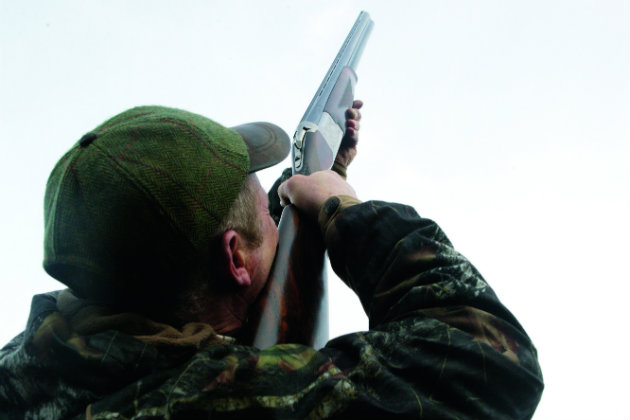
Pay more attention than you think you need to and concentrate hard: each pheasant is different
Pheasant behaviour
As with partridges, good fieldcraft — knowing the behaviour of your pheasants in flight, understanding the conditions on the day and how they will affect the birds’ flight, understanding how the drive works and its topography and being able to tell whether a bird is gaining or losing height — will improve your shooting no end. If you have sound style and technique, it is the final piece in the jigsaw to being able to really shoot to the best of your ability.
Knowing the distance of birds is so important. I have seen so many people beat themselves up because they are missing — or worse, pricking — birds that they think are in range but in fact are not, unless you get that lucky golden pellet straight on the chin. Part of consistent shooting and shooting to the best of your ability is knowing what you can kill cleanly and safely.
- Pay more attention than you think you need to and concentrate hard. Each pheasant is different and they can all behave slightly differently in flight. The size of the bird, its speed and its manoeuvrability in different conditions all combine to influence its behaviour in flight.
- Remember your footwork: if you get your feet wrong, the shot will go wrong. Your feet need to move because of what the bird is doing in flight, not because the rule books say you must move. And again, as with partridges, you must move your feet correctly before you mount the gun and make the shot.
- Good, consistent gun mount is so important. Reduce the factors that could go wrong in mounting the gun consistently on to your pheasants. Address the bird properly and set yourself up for the shot. Do not rush and don’t panic. Finish your shot properly by watching the bird fold in the air.
- Fieldcraft is so important: always keep in mind that the more you understand about what is going on — in other words, the better you can read a drive and take into account the conditions — the more you will understand the birds in flight.
- Whatever you do, if the wheels do fall off and things start to “go wrong” with your shooting, don’t suddenly start trying something different. You might get away with this the first few times, but in the end I can guarantee that it will catch up with you and you will only be left with bad habits, just guessing and searching for the bird.
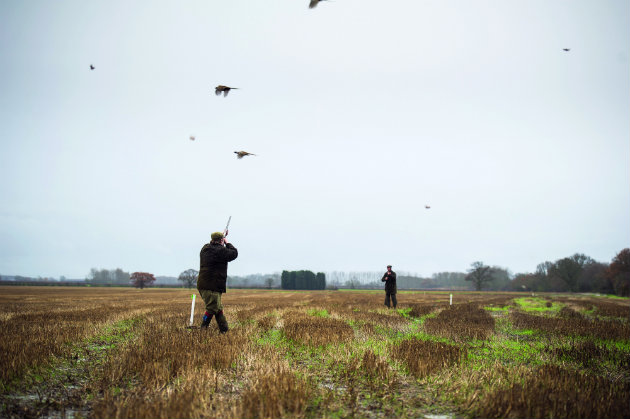
Gun mount is vital: address the bird properly and set yourself up for the shot. Don’t rush and don’t panic
Get back to basics
- It is style and technique that kills the bird. Keep your feet still when mounting your gun. If you don’t, you will automatically cause poor gun mount and moving your feet while mounting the gun will cause you to pull the muzzles of the gun away from the bird you are trying to connect with.
- Being able to mount the gun and muzzles on to the bird consistently is paramount. If you can’t do this, then you will never pick the bird up properly and never read the all-important line, speed and distance.
“It is style and technique that kills the bird. Keep your feet still when mounting the gun”
- Finish your shot properly. This is one of the hardest things to achieve. Many Guns will lift their head off the stock without realising to watch their bird die. It is vital that you keep your head on the stock throughout the shot until the bird folds in the air. Watch your bird die through your gun. A good tip is to look for the impact on the bird.
- Be disciplined with your shooting. Stick to your structure or you will end up in trouble. Know your distances and shoot within your ability and your ability will improve. You will also kill cleanly and increase your confidence.
Shoot within your ability and you’ll improve
How to improve your pheasant shooting technique
Here are some pheasant shooting techniques to help you in the field Footwork and balance In all forms of driven…
Exercises you can do at home right now to improve your shooting technique
Do you have a feeling that you could improve your gun-mount? Well, there’s no better time than the present for…
Related Articles
Get the latest news delivered direct to your door
Subscribe to Shooting Times & Country
Discover the ultimate companion for field sports enthusiasts with Shooting Times & Country Magazine, the UK’s leading weekly publication that has been at the forefront of shooting culture since 1882. Subscribers gain access to expert tips, comprehensive gear reviews, seasonal advice and a vibrant community of like-minded shooters.
Save on shop price when you subscribe with weekly issues featuring in-depth articles on gundog training, exclusive member offers and access to the digital back issue library. A Shooting Times & Country subscription is more than a magazine, don’t just read about the countryside; immerse yourself in its most authoritative and engaging publication.






